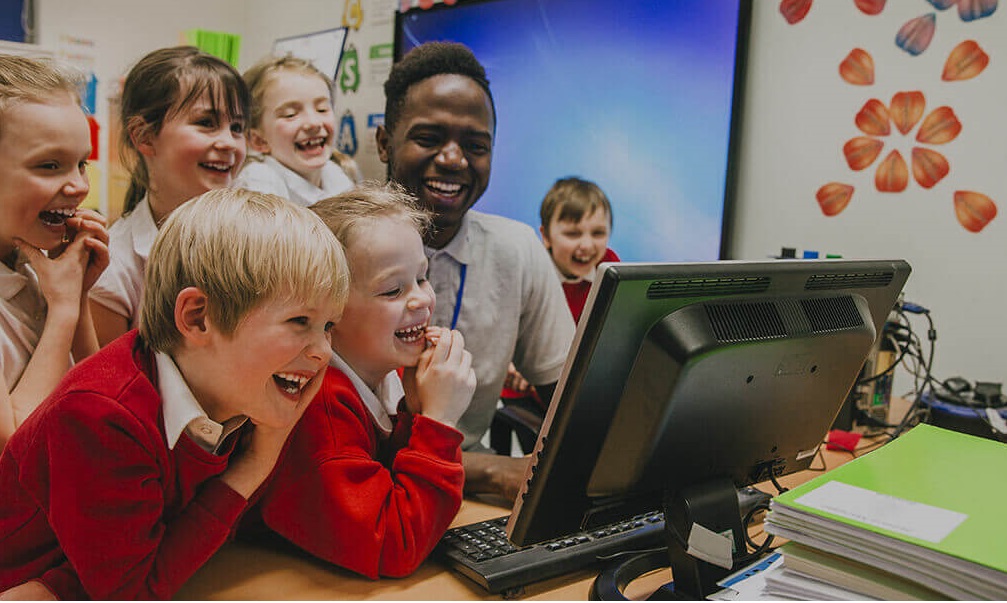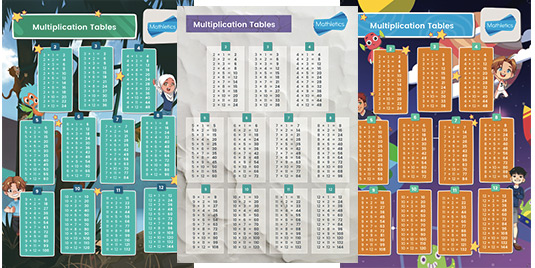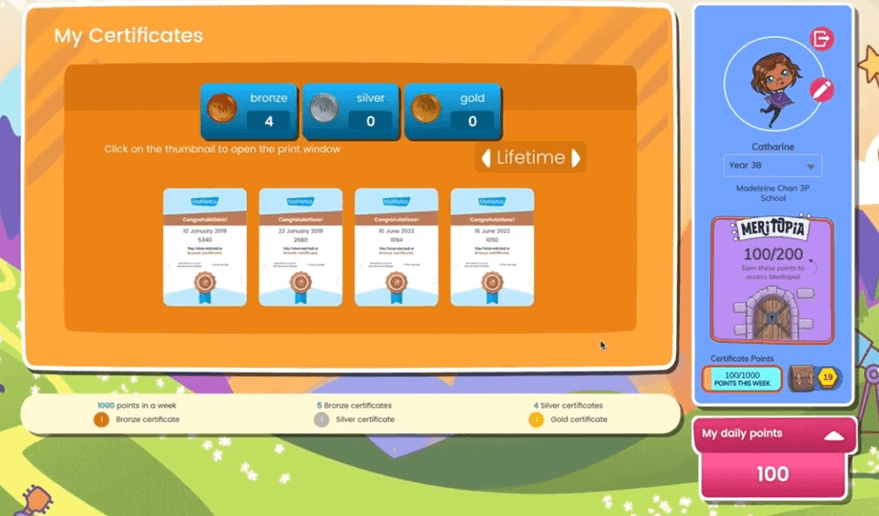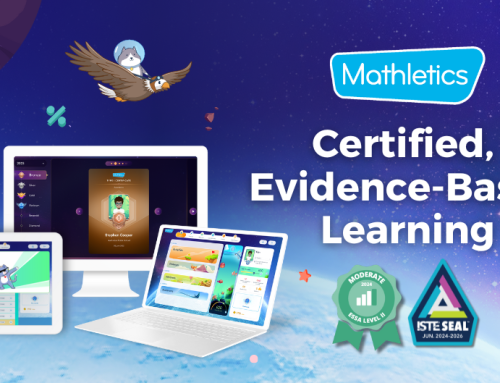Your students are getting restless during mathematics class.
They don’t seem motivated and show little interest to learn the subject even though, you’ve spent hours thinking of ways to make the lessons more interesting.
We’ve all been there. It can be hard ensuring that students are motivated and engaged in every lesson. That’s why we’ve got your back.
To help you break the monotony and boredom of drill and worksheets, here are 15 innovative ways to engage students in mathematics.
1. Cross Collab: Cross-curricula Instruction
Take the math(s) out of mathematics.
Combining maths with other subject knowledge and skills allows students to be more aware of maths in the world around them. When cross-curricula instruction happens, students are encouraged to integrate their learning experiences and apply knowledge in an organic manner.
It makes learning more accessible, meaningful, and relevant because students start to see maths concepts in other subject areas. This deepens and broadens their understanding of maths and how it is interconnected with other subjects.
Before fleshing out the lesson plan in detail, it is important to identify the objectives of each content area at the start. Also think about the appropriate curriculum benchmarks and how you plan to assess your students’ understanding after each lesson.
2. Tap into Tech
From the use of simple calculators to online mathematics games, videos, and apps; technology in the classroom has evolved tremendously.
Technology brings mathematics to life, allowing students to play a more engaged role in experimenting, investigating and problem solving. Gamified activities blend extrinsic and intrinsic rewards to maintain student’s learning motivation and momentum.
When used effectively, technology allows students to practice and learn concepts more efficiently and reduce mathematics anxiety. Most of all, it saves teachers precious time.
Consider Mathletics, an online mathematics resource that makes preparing, planning, and setting lessons easy for teachers. With assisted marking, automated reporting, plus hundreds of mathematics lessons and resources at your fingertips, you free up precious time to focus on your students.
Save time with Mathletics assisted marking and automated reporting
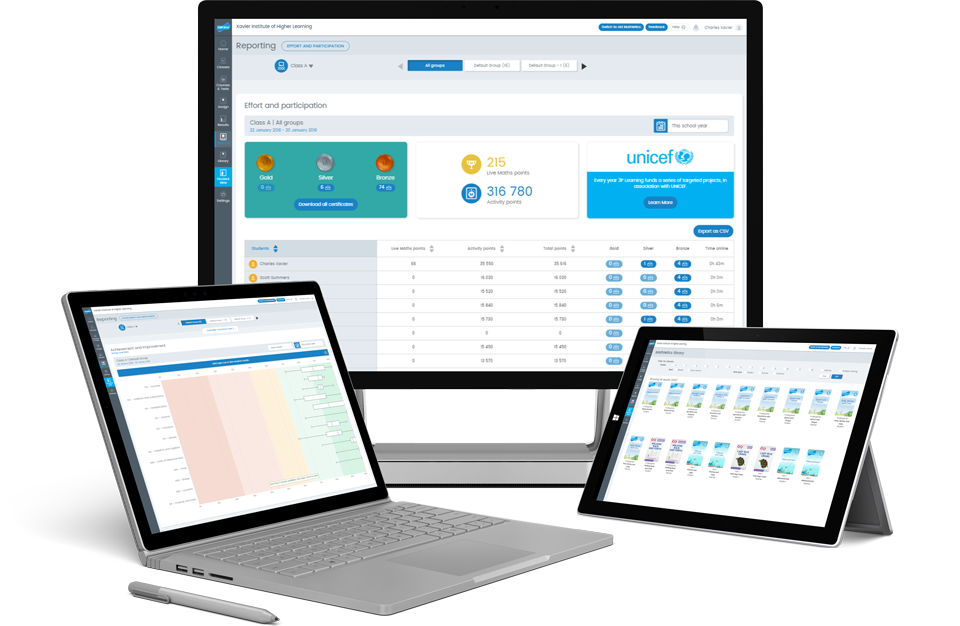
3. Share an Important ‘Mathematical’ Event
Did you know that famous mathematician Carl Friedrich Gauss added the numbers from 1 to 100 within seconds when he was in primary school? Young Gauss discovered that he could pair all the numbers into 50 pairs, and multiplied it to their sum (101), to arrive at his answer.
Connecting well-known historical maths story like how Gauss solved the above problem can inspire and help students relate to mathematics concepts in class. For primary or elementary students, use Gauss’s story to connect the concept of solving problems that involve the sum of series of integers. Guide them to explore ways to find the sum of the first 5 or 10 counting numbers.
4. Happy ‘Mathematics Day’
Allocate a day in the year to celebrate mathematics in the classroom. If you haven’t set aside a special day in your calendar, save this date – 8 March 2022, which also happens to be World Maths Day.
Share this with your class and brainstorm for ideas and activities to do on this day. It can be a day where you remember famous mathematicians, embark on a mathematics project, or have a show and tell of ‘My Maths/Math Story’.
5. Tell Me Your Story
Who encouraged you to learn mathematics when you were young? What was your attitude of mathematics when you were growing up? How has that changed over the years?
We all have a story. Get the ball rolling by sharing your own story first. By sharing your story, it might inspire and encourage a student who’s struggling with the subject.
Once you’ve shared yours with the class, let students share next. Encourage them to think about how they use mathematics in their lives at home beyond school. Giving students a platform to share their story helps them understand how they’re already mathematics beyond school.
Guide them with open-ended questions such as, “When do use mathematics at home and when they’re out? How do you feel about learning mathematics, and why do they feel that way?”
6. Run ‘Mathathons’
Formal tests and assessments can drain the fun in learning mathematics. Mix things up by giving students a challenge or let them participate in a competition to experience doing mathematics in a new context and setting. However, competitions must be within the reach of student’s ability and align with your objectives.
Check out what the local mathematics competitions in your region. There are also online competitions schools can participate for free. World Maths Day for example, is a global celebration of mathematics where millions of students aged 5 to 18 across the world compete in Live Mathletics challenges. It’s all-inclusive, free, and open to schools as well as students learning from home.

Be a part of the world’s largest online mathematics event!
You could also run your own mini-Mathathons in class or hold ‘Mathlete’ competitions with another class in a style and format that suits you best. Set small prizes or certificates to give students that extra boost of confidence.
At Mathletics, we believe it’s important to celebrate success. Teachers can easily access, download, and print individual student certificates to mark their achievement. There are also customisable reward certificates in our range of free classroom printables.
7. Head Out: Plan a (Virtual) Field Trip
What better way to connect mathematics to real life situations than a trip out of the classroom. Museums and observatories are great places to start as they often host workshops for schools.
Bring your class to the nearest supermarket and get them to buy items within a set budget to practice adding, subtracting, and dividing money. Visit a suburb with interesting architecture to discover how geometry is used in buildings.
We understand that arranging a school trip or excursion is an uphill task. But field trips don’t have to be bound by physical venues with direct mathematics connections. Google virtual field trips allows you to whisk your students away to museums, Mars, and more, without leaving the classroom.
Mathletics, the trusted mathematics eLearning platform for countless of schools over the past 15 years, is just as adaptable to a remote learning scenario.
8. Today Our Special Guest Speaker Is…
If you’re really challenged to plan a school trip, consider bringing the trip to you. There’s a pool of people you already know who can bring a range of expertise to your classroom. Yup, you guessed right.
Parents are our greatest ally and partners. We know the importance of parent-teacher communication, so reach out to your class parents. Find out what they do. Are they in a job where they deal with mathematics on a day-to-day basis?
Invite parents to be a guest speaker in your class to share how mathematics is relevant to their job. You don’t need to have accountant mums or banker dads. Construction workers, stay-at-home mums, designers – we all need to count, add, subtract, divide in our lives.
Don’t forget to ask parents to share how they use mathematics in their personal everyday lives too, and what was their ‘relationship’ like with the subject to spark inspiration. It can be refreshing for students to learn from another adult.
9. Give Students Ownership: Self-Assessments
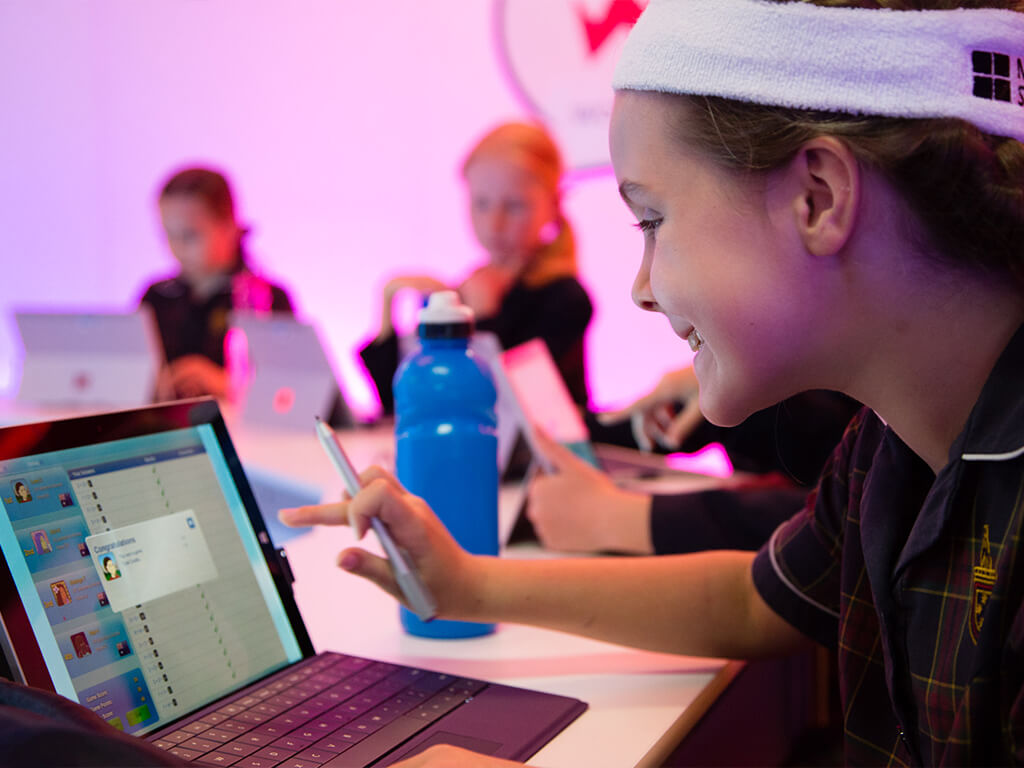
If you want students to take control and ownership of their own learning, provide opportunities for self-assessments. This can be as simple as asking them questions of how they feel or allowing them to mark their own work in class together and grade themselves.
For a more detailed view of where a student’s mathematics knowledge is at, filling in a self-assessment review sheet can be effective.
Review sheets give a more detailed view of where your students mathematical levels are at. It can be filled during post-assessment or in-class while you review last year’s topics.
With Mathletics, students can see their progress and are rewarded with more credits when they improve their scores, motivating them to master these activities and take control of their learning. Already have a Mathletics’s account? Check out these Mathletics review activities to help you identify any gaps and refresh your students’ memory.
Empower students to take ownership of their learning with Mathletics

10. Create a Buddy System: Peer Learning
Evidence shows that peers learning can help students learn effectively. It not only gives students the chance to learn in a non-traditional teaching method, (i.e., learn from their peers), it allows them to take the lead in their learning journey.
For students with mathematics anxiety, taking instructions from a person with higher authority can be stressful. Learning from a peer can make the experience more comfortable and enjoyable.
Peer learning comes in different forms. Facilitated through learning activities, it can be student–led workshops, role-play, study groups or project work. Once you’ve determined the makeup of your class, pair students who are struggling with mathematics with students who are stronger in the subject.
An example of a peer learning exercise is the think-pair-share activity. Give your class a set of specific mathematics questions to solve on their own. Next, assign students in pairs (mathematics ‘buddy’) to discuss their answers. Lastly, have each pair share their thoughts with the class and allocation time for questions.
11. Seize the Day with Teachable Moments
One day while teaching additions, your student asks you why she needs to do mathematics homework. Her classmates start chiming in and asking the same thing too.
We plan lessons to meet the needs of all students and academic standards. But sometimes, there are unexpected moments where you’re presented with a chance to teach students in that moment.
You can turn the above scenario into a teachable moment by flipping these questions back to your class. Hear what your students have to say. Set a timeframe (e.g., 20 minutes) for this spontaneous discussion.
Not all moments are teachable moments. When students already have some background knowledge of the topic, start talking and asking deeper questions, show eagerness to learn more and are disappointed when you try to steer the discussion back to your planned lesson; these are signs of a teachable moment.
To know a teachable moment takes experience. That’s why when it happens, its’ worthwhile to take the time to explore these moments.
12. Let’s Solve This: Project-based Learning
For older students, project-based learning (PBL) is a great classroom approach for them to acquire new and deeper knowledge by exploring real-world problems.
Because project-based learning requires an extended process of questioning, researching, and applying information, it makes learning more personal, developing students’ critical-thinking and problem-solving skills.
Projects should result from students’ attempts to answer questions. For example, students can embark on a project to investigate ‘Randomness in our lives’ in a specific topic area, say usage of screen time versus health. They can find out how probability affects their lives by looking at statistics of a person’s screen time and their health.
Another idea is to embark on a visual arts project – ‘the Art of Polygons’. Let students explore the basics of polygons, how it’s used in nature and architecture. They can conceptualise and design their very own masterpiece by using different polygon shapes and present it to the class.
Mathletics has a Mathematics Real-world Project Teacher Kit to help you prepare an enjoyable, skill-building mathematics project.
13. Bring it Back to Nature
River deltas, lightning bolts and blood vessels. When we think of geometry and shapes, most of us think of squares and triangles. Yet, mathematical patterns can be found all around us.
Why are flowers so beautiful? This is because the angle of rotation makes the flower spiral look beautiful. It grows organically from a centre that expands out in a shape of a spiral – also known as rotational symmetry, or fractals. We can spin a flower around and it still looks the same.
Other natural mathematical patterns include the cross section of a tree trunk (concentric circles), the honeycomb from beehives (hexagons), and the patterns on a butterfly (symmetry). By showing students connection to nature, it encourages them to seek mathematical connections with a fresh pair of eyes.
14. Start with a Question: Inquiry-based Learning
Usually, mathematics class starts with answers. Here are the steps to multiply. Repeat. Here are the steps to find the perimeter. Repeat. What happens in this model is memorising the steps. There’s no room to imagine, explore or doubt.
Inquiry-based learning is about arousing and activating curiosity. What is a fresh take on number bonds or fractions? Think of a fun or intriguing piece of information can you use to stimulate your students’ curiosity. Let mathematics be about exploring and looking for clues.
What if you started the lesson with a question. For example, show the class a number pattern from 1 to 20 and say “There’s something hiding in this number pattern. Can you find it?” Or start with a prompt, “Does 36 ÷ 4 = 18 ÷ 2?” Give students time to make observations and ask questions so that real thinking happens.
15. Learn with your Students
As teachers, we feel the need to have the answers to all our students’ questions. So, when a student comes to us and asks a question that we don’t know, it can be daunting or maybe even a little embarrassing. But you are not a walking answer sheet.
Learning alongside your students is a great way to build trust and create opportunities for teachable moments. Instead of brushing their question aside, say, “You know, that’s a great question and I don’t have the answer to that. Let’s find out together.”
By having the courage to own that you don’t know, you’re modelling and teaching students that not knowing isn’t a bad thing – it’s the first step to learning.
Creating a Safe and Positive Space to Learn Mathematics
Our attitude influences how our students learn. When we are open and unafraid to own to our mistakes, it makes it safe for students to make and learn from their mistakes. Model the attitude, language, and behaviour you want to see in class.
At Mathletics, we are strong advocates of the Growth Mindset, fostering an enjoyment of mathematics and an ‘I can’ attitude. Use motivational posters in your classrooms, and cultivate a positive classroom environment through praise, reward systems.
Secondly, a flexible curriculum with the aid of digital tools promotes a positive mathematics learning environment. It allows you to differentiate content and instruction; to refine or extend learning for your students based on their levels and needs, making mathematics accessible to all.
eLearning resources like Mathletics create opportunities to allow students to take ownership of their learning. When students do so, it not only helps them to be successful at school, but also in life.

